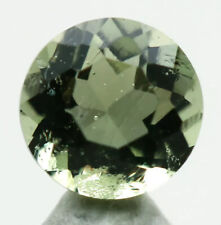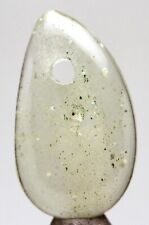Meteorite Impactite Iridium rich clay Cretaceous–Paleogene (K–Pg) boundry Gubbio For Sale

When you click on links to various merchants on this site and make a purchase, this can result in this site earning a commission. Affiliate programs and affiliations include, but are not limited to, the eBay Partner Network.
Meteorite Impactite Iridium rich clay Cretaceous–Paleogene (K–Pg) boundry Gubbio:
$18.00
Iridium rich clay from theCretaceous–Paleogene (K–Pg) boundarynear Gubbio in ItalyCollected in the crack between the rocks shown in the photosCretaceous–Paleogene boundaryGlass Bottle Size : 20 x 12 mm Weight : 2.85 grams***********************
**********************
Luis, left, and his sonWalter Alvarez, right, at theK-T BoundaryinGubbio, Italy, 1981
U S Government-Lawrence Berkeley Laboratory
*****************
TheAlvarez hypothesisposits that themass extinctionof thedinosaursand many other living things during theCretaceous–Paleogene extinction eventwas caused by theimpactof a largeasteroidon theEarth. Prior to 2013, it was commonly cited as having happened about 65 million years ago, but a 2013 paper by Renne et al. gave an updated value of 66 million years.Evidence indicates that the asteroid fell in theYucatán Peninsula, at Chicxulub,Mexico. The hypothesis is named after the father-and-son team of scientistsLuisandWalter Alvarez, who first suggested it in 1980.
In March 2010, an international panel of scientists endorsed the asteroid hypothesis, specifically theChicxulub impact, as being the cause of the extinction. A team of 41 scientists reviewed 20 years of scientific literature and in so doing also ruled out other theories such as massive volcanism. They had determined that a 10–15km (6–9mi) space rock hurtled into earth at Chicxulub. For comparison, the Martian moonPhobosis 11km (7mi) and Mount Everest is just under 9km (5.6mi). The collision would have released the same energy as 100,000,000 megatonnes of TNT (4.2×1023J), over a billion times the energy of the atomic bombs dropped onHiroshima and Nagasaki.
A 2016 drilling project into the peak ring of the crater strongly supported the hypothesis, and confirmed various matters that had been unclear until that point. These included the fact that the peak ring comprised granite (a rock found deep within the earth) rather than typical sea floor rock, which had been shocked, melted, and ejected to the surface in minutes, and evidence of colossal seawater movement directly afterwards from sand deposits. Crucially the cores also showed a near complete absence ofgypsum, a sulfate-containing rock, which would have been vaporized and dispersed as an aerosol into the atmosphere, confirming the presence of a probable link between the impact and global longer-term effects on the climate and food chain.
HistoryMain article:Timeline of Cretaceous-Paleogene extinction event researchIn 1980, a team of researchers led by Nobel prize-winning physicistLuis Alvarez, his son, geologistWalter Alvarez, and chemistsFrank AsaroandHelen Vaughn Micheldiscovered that sedimentary layers found all over the world at theCretaceous–Paleogene boundary(K–Pg boundary; formerly called Cretaceous–Tertiary (K–T) boundary) contain aconcentrationofiridiumhundreds of times greater than normal. Iridium is extremely rare in the Earth\'s crust because it is very dense and has the affinity for iron that characterizes the siderophile elements (seeGoldschmidt classification), and therefore most of it sank into the Earth\'s core while the earth was still molten. The Alvarez team suggested that an asteroid struck the earth at the time of theCretaceous–Paleogene boundary.
In a 1953 publication, geologistsAllan O. KellyandFrank Dachilleanalyzed geological evidence from around the earth and concluded that one or more giant asteroids impacted the earth, causing an angular shift in the earth\'s axis, global floods, fire, atmospheric occlusion and causingextinction of the dinosaurs.There were other earlier speculations on the possibility of an impact event, but no evidence had been uncovered at that time
EvidenceThe evidence for the Alvarez impact hypothesis is supported bychondriticmeteoritesandasteroidswhich contain a much higher iridium concentration than the Earth\'s crust. Theisotopicratio of iridium in meteorites is similar to that of the Cretaceous–Paleogene boundary layer but significantly different from the ratio in the Earth\'s crust.Chromiumisotopic anomalies found in Cretaceous–Paleogene boundary sediments are similar to that of an asteroid or a comet composed ofcarbonaceous chondrites.Shocked quartzgranules, glass spherules andtektites, indicative of an impact event, are common in the Cretaceous–Paleogene boundary, especially in deposits from around the Caribbean. All of these constituents are embedded in a layer of clay, which the Alvarez team interpreted as the debris spread all over the world by the impact.The location of the impact was unknown when the Alvarez team developed their hypothesis, but later scientists discovered theChicxulub Craterin theYucatán Peninsula, now considered the likely impact site.Using estimates of the total amount of iridium in the K–Pg layer, and assuming that the asteroid contained the normal percentage of iridium found inchondrites, the Alvarez team went on to calculate the size of the asteroid. The answer was about 10 kilometers (6mi) in diameter, about the size of Manhattan.[3]Such a large impact would have had approximately the energy of 1 x 108megatons, i.e. about 2 million times as great as the most powerfulthermonuclear bombevertested.
Paul Renneof theBerkeley Geochronology Centerhas reported that the date of the asteroid event is 66,038,000 years ago, plus or minus 11,000 years, based on theradioactive decayofargon. He further posits that the mass extinction of dinosaurs occurred within 33,000 years of this date.
ImpactThe most easily observable consequence of such an impact would be a vast dust cloud which would block sunlight and prevent photosynthesis for a few years, an event called animpact winter. This would account for the extinction of plants andphytoplanktonand of all organisms dependent on them (including predatory animals as well as herbivores). But small creatures whose food chains were based ondetrituswould have a reasonable chance of survival. It is estimated that sulfuric acid aerosols were injected into the stratosphere, leading to a 10–20% reduction of solar transmission normal for that period. It would have taken at least ten years for those aerosols to dissipate.
Global firestorms may have resulted as incendiary fragments from the blast fell back to Earth. Analyses offluid inclusionsin ancientambersuggest that theoxygencontent of the atmosphere was very high (30–35%) during the late Cretaceous. This high O2level would have supported intense combustion. The level of atmospheric O2plummeted in the early Paleogene Period.If widespread fires occurred, they would have increased the CO2content of the atmosphere and caused a temporarygreenhouse effectonce the dust cloud settled, and this would have exterminated the most vulnerable survivors of the \"long winter\".
The impact may also have producedacid rain, depending on what type of rock the asteroid struck. However, recent research suggests this effect was relatively minor. Chemical buffers would have limited the changes, and the survival of animals vulnerable to acid rain effects (such asfrogs) indicate this was not a major contributor to extinction.
Impact hypotheses can only explain very rapid extinctions, since the dust clouds and possible sulphuric aerosols would wash out of the atmosphere in a fairly short time — possibly under ten years.
Although further studies of the K–Pg layer consistently show the excess of iridium, the idea that the dinosaurs were exterminated by an asteroid remained a matter of controversy amonggeologistsandpaleontologistsfor more than a decade
2016 Chicxulub crater drilling projectMain articles:Chicxulub craterandCretaceous–Paleogene extinction eventIn 2016, a scientific drilling project drilled deep into thepeak ringof theChicxulub impact crater, to obtainrock coresamples from the impact itself. The discoveries were widely seen as confirming current theories related to both the crater impact, and its effects. They confirmed that the rock comprising the peak ring had been subjected to immense pressures and forces and had been melted by immense heat and shocked by immense pressure from its usual state into its present form in just minutes; the fact that the peak ring was made of granite was also significant, since granite is not a rock found in sea-floor deposits, it originates much deeper in the earth and had been ejected to the surface by the immense pressures of impact; thatgypsum, asulfate-containing rock thatisusually present in the shallow seabed of the region, had been almost entirely removed and must therefore have been almost entirely vaporized and entered the atmosphere, and that the event was immediately followed by a hugemegatsunami(a massive movement of sea waters) sufficient to lay down the largest known layer of sand separated by grain size directly above the peak ring.
These strongly support the hypothesis that the impactor was large enough to create a 120 mile peak ring, to melt, shock and ejectbasement granitefrom themidcrustdeep within the earth, to create colossal water movements, and to eject an immense quantity of vaporized rock and sulfates into the atmosphere, where they would have persisted for a long time. This global dispersal of dust and sulfates would have led to a sudden and catastrophic effect on the climate worldwide, large temperature drops, and devastated thefood chain

Related Items:
Faceted Moldavite Gemstone Meteorite Impactite Tektite AUTHENTICITY GUARENTEED
$19.98
Faceted Moldavite Gemstone Meteorite Impactite Tektite AUTHENTICITY GUARENTEED
$14.35
LIBYAN DESERT GLASS CARVING CABOCHON METEORITE IMPACTITE TEKTITE GEMSTONE EGYPT
$49.99



